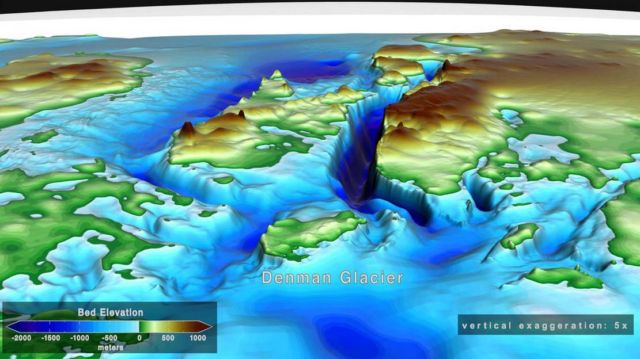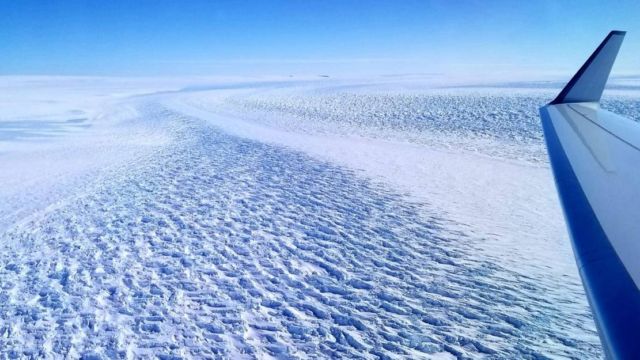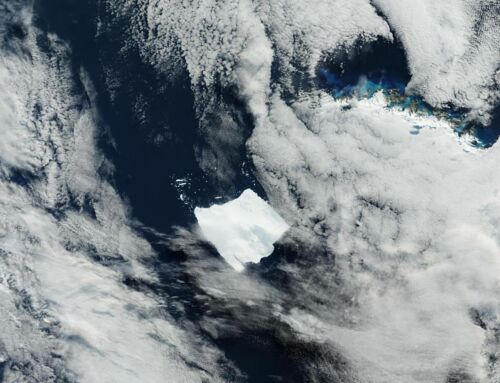Denman Glacier in East Antarctica is melting at a faster rate now than it was from 2003 to 2008.
Denman Glacier in East Antarctica retreated 3.4 miles (5.4 kilometers) from 1996 to 2018, according to a new study by scientists at NASA’s Jet Propulsion Laboratory and the University of California, Irvine. Their analysis of Denman – a single glacier that holds as much ice as half of West Antarctica – also shows that the shape of the ground beneath the ice sheet makes it especially susceptible to climate-driven retreat.
Until recently, researchers believed East Antarctica was more stable than West Antarctica because it wasn’t losing as much ice compared to the glacial melt observed in the western part of the continent. “East Antarctica has long been thought to be less threatened, but as glaciers such as Denman have come under closer scrutiny by the cryosphere science community, we are now beginning to see evidence of potential marine ice sheet instability in this region,” said Eric Rignot, project senior scientist at JPL and professor of Earth system science at UCI.
 This illustration shows a vertically exaggerated image of the ground under Denman Glacier in East Antarctica, including a deep trough (blue area in the center) beneath its eastern flank. Credit: NASA’s Scientific Visualization Studio
This illustration shows a vertically exaggerated image of the ground under Denman Glacier in East Antarctica, including a deep trough (blue area in the center) beneath its eastern flank. Credit: NASA’s Scientific Visualization Studio
“The ice in West Antarctica has been melting faster in recent years, but the sheer size of Denman Glacier means that its potential impact on long-term sea level rise is just as significant. If all of Denman melted, it would result in about 4.9 feet (1.5 meters) of sea level rise worldwide.”
Images credit NASA
source JPL.NASA






Leave A Comment